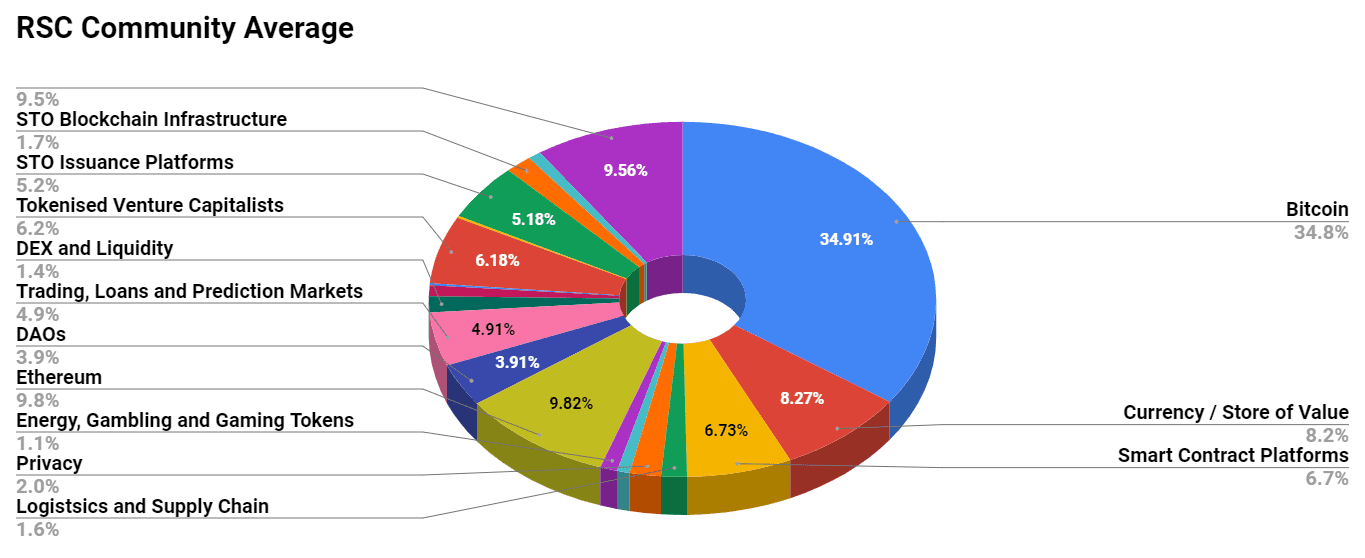Crypto Market Commentary
25 March 2020

Doc's Daily Commentary
The 25 March ReadySetLive session with Doc and Mav is listed below.

Mind Of Mav
How The World Is Responding To Economic Uncertainty
Countries around the world are shoring up their economies for the worst economic downturn in modern history.
Even if days like today indicate that the market hopes for a recovery, I think it’s wishful thinking given how much we’ve seen society and economies shift under duress of only one month of turmoil.
Not surprisingly, many of those countries are focused on providing direct support to workers, while making it easier for companies to stay in business with loans and other programs. In addition, many of them already have robust sick leave and unemployment compensation policies in place, as well as a national health insurance system. All that stands in direct contrast with conditions here in the US as well as with our response, which seems to be focused on keeping the corporations afloat in the hopes that they will maintain employment.
Let’s look at the response from different countries around the world:
United Kingdom: The government has promised to pick up 80% of the salaries of employees who are no longer working, as long as their companies do not fire them. This policy will remain in place for three months, at which time it will be reviewed and potentially extended. In addition, the government is offering businesses interest-free loans for the next twelve months. Mortgage payments have been suspended for three months. Workers on sick leave can get the equivalent of just over $100 per week for up to 28 weeks. Self-employed workers get no sick leave compensation. Britain’s unemployment compensation is similarly inadequate, offering as little as $300 per month.
Germany: The state is allocating over $500 billion, around 3.5% of GDP, in loan guarantees for businesses as well as delaying tax payments. $40 billion will go toward keeping smaller firms viable, while an existing program for larger firms will pay the wages of workers whose hours have been substantially reduced as long as the firm does not fire them. Sick leave compensation is 100% of salary for six weeks, with 80% of that cost being picked up by the government for small businesses. Unemployment benefits cover between 60% and 70% of salaries and are available for over a year if you have worked continuously for the prior two. Additionally, the state offers a 25% housing subsidy with unemployment, raising the total benefit to somewhere around 75% of prior income.
France: President Macron has basically promised that “No French company, whatever its size, will be exposed to the risk of collapse” during the pandemic. In that regard, the state has offered around $330 billion in loan guarantees and another $50 billion for the deferral of certain tax payments for the next month, with the forgiveness of those payments for companies in danger of collapse. Macron has not ruled out nationalizing firms in order to keep companies from going under. Paid sick leave covered by the state amounts to 50% of salary with companies having to supplement that to 90% for 30 days and 66% for the subsequent 30 days. Unemployment benefits cover nearly 70% of the prior salary.
Netherlands: The state will cover up to 90% of salaries of essentially furloughed workers as long as the firm expects to lose 20% of revenue and promises not to fire any employees for business reasons. The actual percentage of salary paid will be linked to the actual losses incurred by the individual firms. The policy will be in place for the next three months with a possible extension for an additional three months after that. The government has even offered to pay 80% of these expected costs in advance. Self-employed workers may qualify for additional subsidies to offset living expenses. In addition, tax deferrals will be allowed. Sick leave compensation is 70% of salary for up to two years with many companies providing the additional amount to bring that number up to 100%. Unemployment compensation covers 70% of the average salary and lasts for at least six months.
Japan: Compared to those above, the economic response in Japan has been rather muted. The government has added 1.26 trillion yen in special financing for small and medium-sized businesses, mostly at no interest and with no collateral requirements. That amounts to less than 1% of GDP. At present, Japan has no plans to revisit its current budget but that will surely change as the tourism sector has collapsed and the Olympics have been postponed. Discussions are already underway for a 30 trillion yen stimulus, over 5% of GDP, probably in the form of tax cuts. Technically, sick leave compensation covers 66% of salary and lasts for up to 18 months. As a practical matter, however, most Japanese workers avoid taking sick leave. Unemployment covers a similar percentage of income and normally lasts 3 to 5 months.
Australia: The government announced a package of around $11 billion (USD) in response to the pandemic, not even 1% of GDP. That includes a one-time, tax-free payment of $750 (AUD) for 6.5 million lower-income Australians. Smaller businesses can receive tax free grants up to $25,000 (AUD), with each business receiving a minimum of $2,000 (AUD). In addition, the government instituted a number of business tax changes. Permanent employees only receive 10 days of sick leave per year and nearly 25% of all workers receive no leave at all. Unemployment compensation is equally bad, the lowest in the OECD even including a housing subsidy, with workers simply receiving a flat fee rather than a percentage of prior income based on length of employment or contributions. On the other hand, that payment continues indefinitely until the worker can find new employment.
South Korea: The country’s early and extensive testing enabled it to control the outbreak without massively disrupting its economy. Even so, the state provided nearly $25 billion in additional stimulus, around 1.5% of GDP. That stimulus was primarily focused on supporting medical institutions and small and medium sized businesses, as well as child care subsidies. Korean workers receive no sick leave and the culture makes it unlikely they would take them even if they were available. The country does have an existing worker-retention program that pays 70% or more of essentially furloughed employee wages. Self-employed and part-time workers may be eligible for a one time cash payment. Unemployment compensation is being raised from 50% to 60% of average salary and will be available for five months, an increase of around one month from prior policy.
Denmark: Denmark may be taking the most aggressive economic measures of any country. As one analyst described it, the government is “freezing” its economy in place for three months. If a company is going to lay off 30% or more of its staff or fire more than 50 employees, the government will step in and pay 75% of those workers as long as the company abandons the layoffs or firings. The remaining 25% of these worker’s salaries would still be paid by the employer. The government would cover 75% of salaries up to over $50,000. The workers receiving this benefit will not actually be working for their company and will lose this benefit if they take another job. In addition, the state is guaranteeing 70% of any new loans to companies. Companies can also qualify for government payments for their fixed costs such as rent based on the amount of revenue they have lost. As the analyst notes, “The philosophy here is that the government wants companies to preserve their relationship with their workers. It’s going to be harder to have a strong recovery if companies have to spend time hiring back workers that have been fired.” Self-employed and part-time workers are not covered by this scheme which will run for three months. All told, Denmark expects the cost of this three-month plan to equal around 13% of its GDP, an enormous short term investment. In addition, sick leave, which is normally picked up by the company for the first 30 days, is now being covered by the government from day one. Denmark also already has one of the most generous unemployment compensation policies, paying 90% of the worker’s salary for up to four years.
United States: Two small bills have already been put into law, amounting to over $108 billion. Those bills focuses on medical funding, loan subsidies for small businesses, supporting unemployment insurance and increased Medicaid costs, free COVID-19 testing for those unable to afford it, and reimbursements for companies offering sick leave. The packages contain no direct payments to workers. A third package worth approximately $2 to $2.5 trillion, or around 10%-13%% of GDP, is still being negotiated. It appears there will be some direct payment to US taxpayers as well as a $500 billion bailout for large corporations. There is no national paid sick leave policy in place but state and local governments have individual requirements. Even so, nearly three-quarters of Americans receive some sort of paid sick leave from their companies, although that rarely amounts to more than ten days of pay. Unemployment compensation is equally weak and again relies on the policies of the individual states. In general, workers only receive anywhere from 40%-60% of their salary when unemployed. In addition, most states only pay unemployment for six months, although this has been extended, even doubled, in times of economic crisis. It appears that the third emergency package may provide a supplement to unemployment that could cover 100% of income for three months. Of all the above countries, only the United States does not provide a scheme for universal health care.
As the Danish employment minister notes, the goal of governments picking up the wages of employees no longer needed by firms while keeping them under contract is simply to avoid massive layoffs and make it easier for those firms to recover when the time comes. It is a lesson learned during the financial crash of 2008. Says the minister, “This is very different from 12 years ago when, as you might say in American terms, we bailed out Wall Street and forgot about Main Street. This time around, it’s about preserving Main Street as much as we can. After the lockdown, we knew that people would get fired in vast numbers. We wanted to avoid most firings, entirely. The best idea we came up with was for governments to pay businesses to keep employees”.
The COVID-19 pandemic is going to be an economic test for every country. Even a country not badly affected by the virus itself will still see its economy challenged simply because of the oncoming global recession. In addition, every country’s medical system will be severely challenged and probably overwhelmed by the pandemic. There are still many unknown variables that include the actual mortality rate, the possibility of reinfection, and the potential of the virus to mutate. The idea to pay businesses to keep employees may be unsustainable if the pandemic turns out to be more than a six-month event in those countries. On the other hand, if the 3–6 month horizon for recovery turns out to be a reality, it will be interesting to see whether those countries’ economies recover more quickly than those who endured mass unemployment. In the US, on Federal Reserve Board Governor is predicting 30% unemployment over the coming months and state unemployment systems are already being overwhelmed.
This pandemic has not yet created a banking crisis and it is clear that both the US Federal Reserve and the ECB are determined to provide enough liquidity to prevent it from becoming one. The lesson of 2008 and beyond is that there is little danger in doing too much. And it is important to see that governments around the world have taken that to heart and are experimenting with policies that are focused on keeping workers employed rather than shareholders afloat. If these experiments work, we are likely to see them become permanent tools in the policy arsenal to deal with significant economic downturns. And with two black swan events in a 12 year period and the deficiencies they have exposed, it is clear that capitalism is ripe for reform.
Press the "Connect" Button Below to Join Our Discord Community!
Please DM us with your email address if you are a full OMNIA member and want to be given full Discord privileges.
An Update Regarding Our Portfolio
RSC Subscribers,
We are pleased to share with you our Community Portfolio V3!

Add your own voice to our portfolio by clicking here.
We intend on this portfolio being balanced between the Three Pillars of the Token Economy & Interchain:
Crypto, STOs, and DeFi projects
We will also make a concerted effort to draw from community involvement and make this portfolio community driven.
Here’s our past portfolios for reference:
RSC Managed Portfolio (V2)
[visualizer id=”84848″]
RSC Unmanaged Altcoin Portfolio (V2)
[visualizer id=”78512″]
RSC Managed Portfolio (V1)

